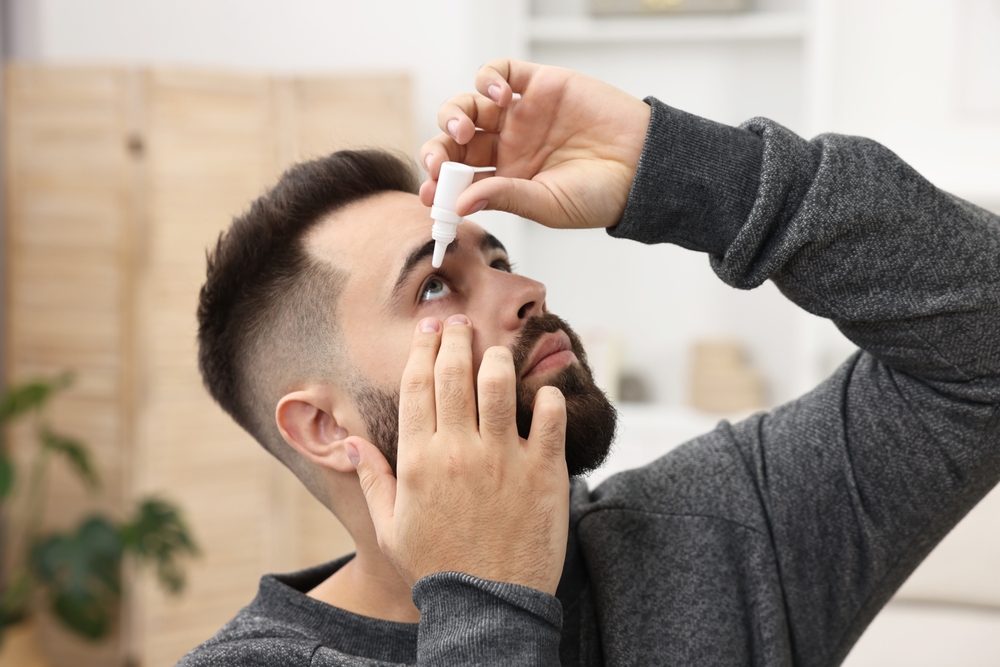Will Dry Eye Improve Without Treatment?
Do your eyes feel dry, itchy, and irritated? Do you often find yourself reaching for eye drops to reduce irritation? These could be signs of having dry eye.
When your eyes feel dry, it can be very uncomfortable. You might itch and rub your eyes to try and relieve the symptoms, but this will likely only make your eyes even more red and swollen.
While most people deal with dry eyes from time to time, dry eye syndrome, often referred to as dry eye, is a chronic, persistent condition that is more complicated to treat
Keep reading to learn more about whether dry eye will improve without treatment.
What is Dry Eye Syndrome?
Dry eye is an eye condition that impacts the tear film. The tear film covers the surface of your eye and is made up of water, oil, and mucus.
When working properly, the tear film is stable and smooth. However, issues with the tear film can disrupt the process and cause many uncomfortable symptoms.
If you are missing any of the components of the tear film, your tears may not be able to fully cover the surface of your eye and may evaporate too quickly. This can result in dry eye syndrome.
What are the Symptoms of Dry Eye?

If you think you may have dry eye, seeing your eye doctor at Complete EyeCare West is the fastest way to get a diagnosis and effective treatment.
You should contact your eye doctor if you have any of these common dry eye symptoms:
- A gritty or sandy feeling in your eye
- A feeling that something is in your eye that won’t come out
- A burning or stinging sensation
- Sensitivity to light
- Blurry vision
- Mucus coming from your eye
- Watery eyes and excess tears
While it might sound strange that dry eye syndrome causes watery eyes, this is a common symptom. Watery eyes occur when the outer layer of the tear film, called the meibomian glands, doesn’t make enough oil.
This causes the middle watery layer of the tear film to evaporate faster. In turn, your tear glands make more watery tears to try and make up for this deficiency.
What are Dry Eye Risk Factors?
Many factors can increase your risk of dry eye syndrome. Some of these risk factors are out of your control, while others you can reduce by making lifestyle changes.
The most common dry eye risk factors include:
- Smoking
- Contact lens use
- Allergies
- Autoimmune conditions like lupus, Sjogren’s syndrome, or rheumatoid arthritis
- Certain medications, such as antidepressants, antihistamines, or birth control pills
- Your age, as risk increases the older you get
- Your environment, especially if you are in a place that is dry or windy
- Past eye procedures such as LASIK
Do You Need Dry Eye Treatment?
Because dry eye syndrome is a chronic condition, you will need treatment to manage and alleviate the symptoms. Dry eye has many effective treatment options that can improve your quality of life.
It may take time to find the right treatments for you. You may also need a combination of different approaches. While it can be frustrating to find what works, the Complete EyeCare West team will work with you to ensure your comfort.
Treatment Options For Dry Eye
Dry eye has many potential causes, but it also has many potential treatments. Some of the most common treatments for dry eye include:

Lifestyle Changes
Although many people with dry eye need further treatment, specific lifestyle changes can help some people get relief. If your dry eye is due to contact lens use, consider switching to glasses or wearing contact lenses less frequently.
If your environment is dry, you should use a humidifier in the areas you spend the most time in. This is especially effective in the winter as the air is drier and has a higher potential to irritate your eyes.
Your eyes can also benefit from diet changes. Drinking more water and eating foods high in omega-3 fatty acids, like salmon, walnuts, and vegetable oils, can help with dry eye. If you don’t want to change your diet, over-the-counter supplements of omega-3 fatty acids can also help.
Eye Drops
Eye drops are the most common treatment option for dry eye and are usually the first recommended method. Many types of eye drops may address dry eye, including artificial tears.
Prescription Treatment Options
If lifestyle changes and over-the-counter eye drops aren’t enough to treat your dry eye symptoms, your eye doctor will likely recommend prescription treatment options or procedures.
Prescription Eye Drops

Prescription eye drops can help treat dry eye, and they’re also good for reducing inflammation and increasing your natural tears. Your eye doctor at Complete EyeCare West may prescribe Restasis or Xiidra to improve your dry eye symptoms.
Punctal Plugs
Also known as punctal occlusion, this treatment can help people who don’t produce enough tears. The small plug is inserted during a quick procedure to keep tears from escaping your eyes.
Thermal Pulsation Therapy
LipiFlow, or thermal pulsation therapy, helps patients with an unstable tear film by assisting the meibomian glands in producing more oil.
Dry eye syndrome is uncomfortable, and the symptoms will likely continue unless the underlying cause is addressed. Instead of living with itchy, watery, burning eyes, book an appointment with your eye doctor at Complete EyeCare West.
Your eye doctor will diagnose the root cause of your dry eye and then develop an effective treatment plan that addresses your symptoms.
Do you want relief from dry eye symptoms? Explore treatment options available to you when you schedule an appointment at Complete EyeCare West in Colombus, OH, today!







